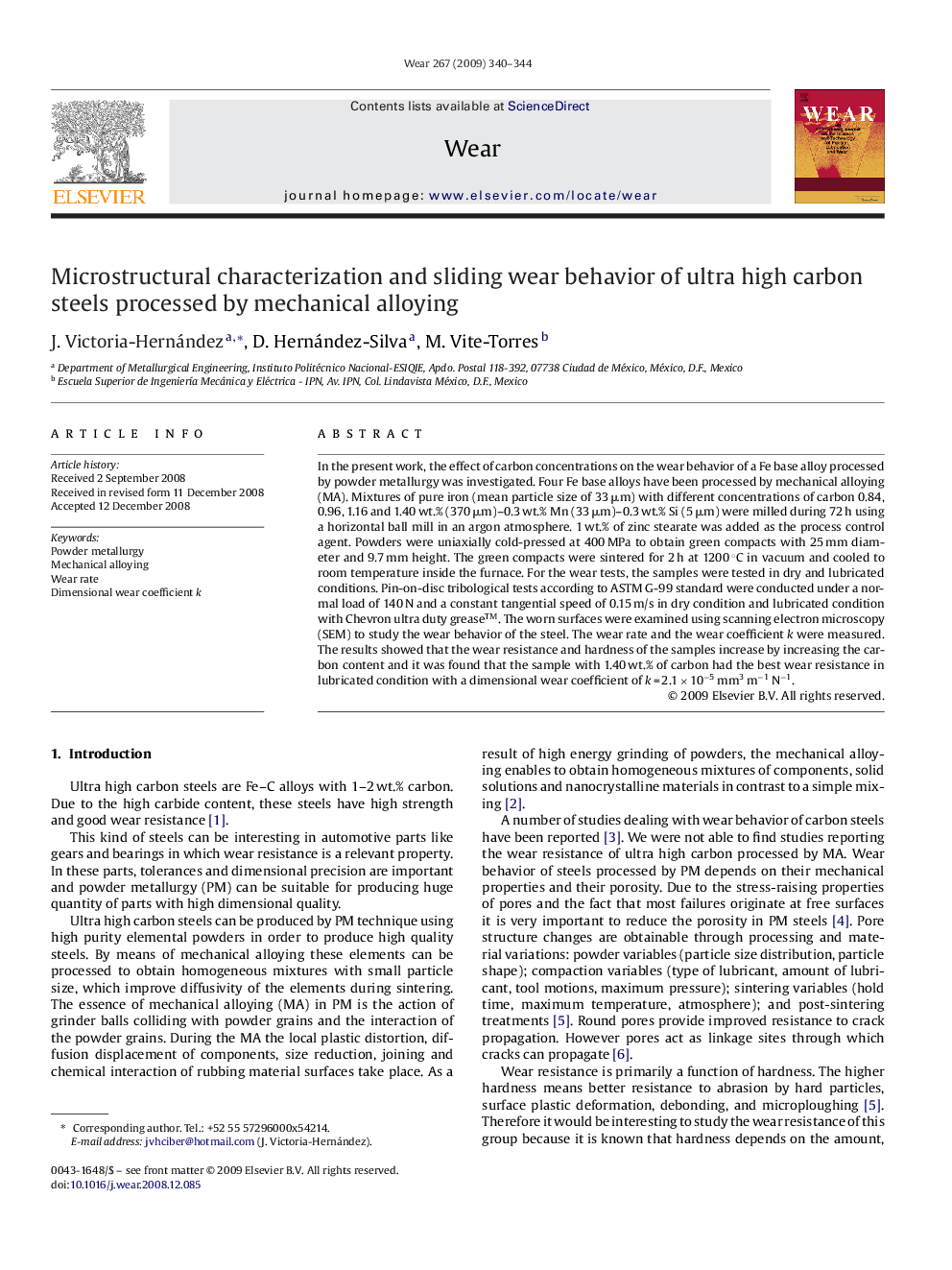| Article ID | Journal | Published Year | Pages | File Type |
|---|---|---|---|---|
| 618738 | Wear | 2009 | 5 Pages |
In the present work, the effect of carbon concentrations on the wear behavior of a Fe base alloy processed by powder metallurgy was investigated. Four Fe base alloys have been processed by mechanical alloying (MA). Mixtures of pure iron (mean particle size of 33 μm) with different concentrations of carbon 0.84, 0.96, 1.16 and 1.40 wt.% (370 μm)–0.3 wt.% Mn (33 μm)–0.3 wt.% Si (5 μm) were milled during 72 h using a horizontal ball mill in an argon atmosphere. 1 wt.% of zinc stearate was added as the process control agent. Powders were uniaxially cold-pressed at 400 MPa to obtain green compacts with 25 mm diameter and 9.7 mm height. The green compacts were sintered for 2 h at 1200 °C in vacuum and cooled to room temperature inside the furnace. For the wear tests, the samples were tested in dry and lubricated conditions. Pin-on-disc tribological tests according to ASTM G-99 standard were conducted under a normal load of 140 N and a constant tangential speed of 0.15 m/s in dry condition and lubricated condition with Chevron ultra duty grease™. The worn surfaces were examined using scanning electron microscopy (SEM) to study the wear behavior of the steel. The wear rate and the wear coefficient k were measured. The results showed that the wear resistance and hardness of the samples increase by increasing the carbon content and it was found that the sample with 1.40 wt.% of carbon had the best wear resistance in lubricated condition with a dimensional wear coefficient of k = 2.1 × 10−5 mm3 m−1 N−1.
